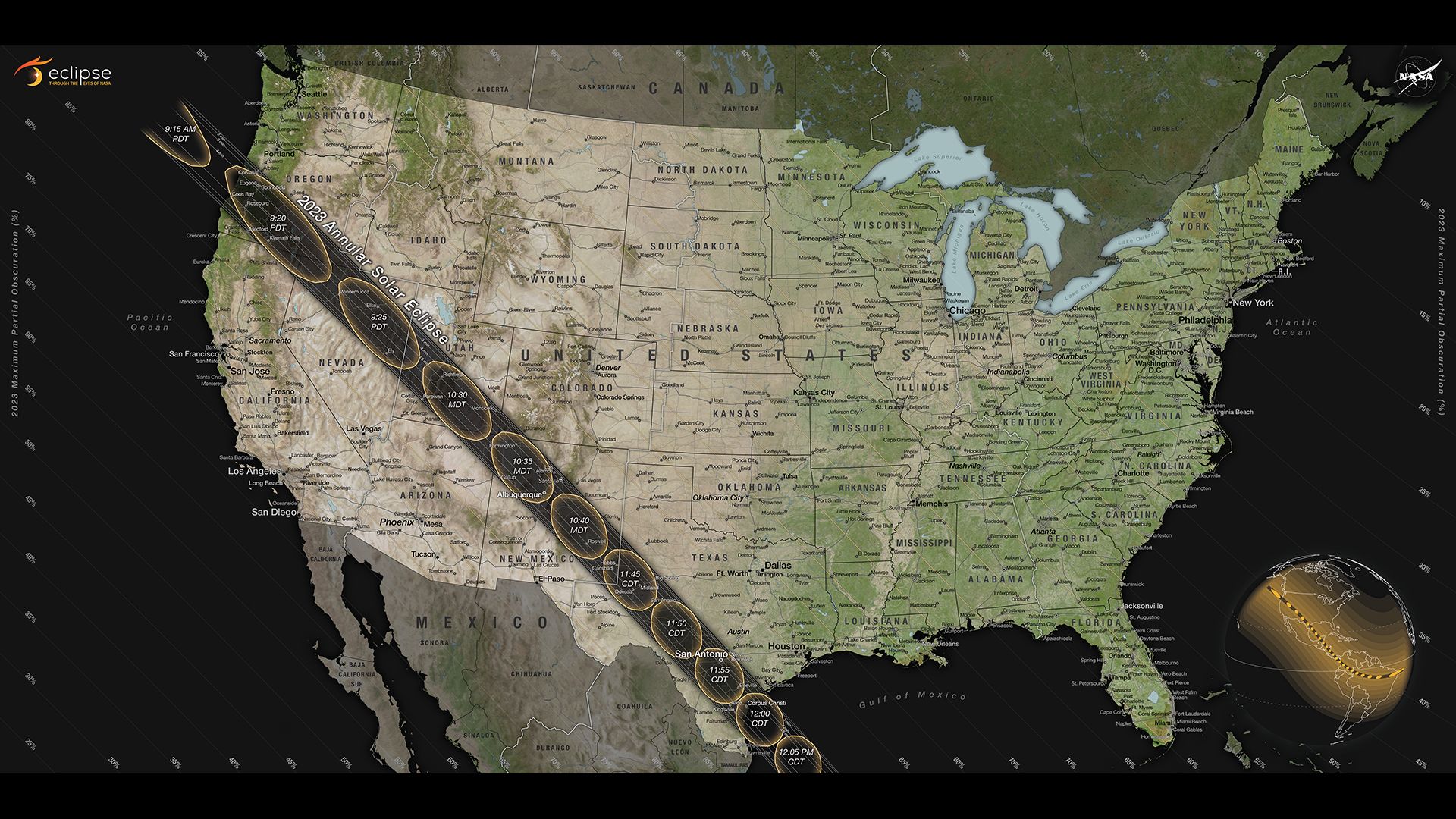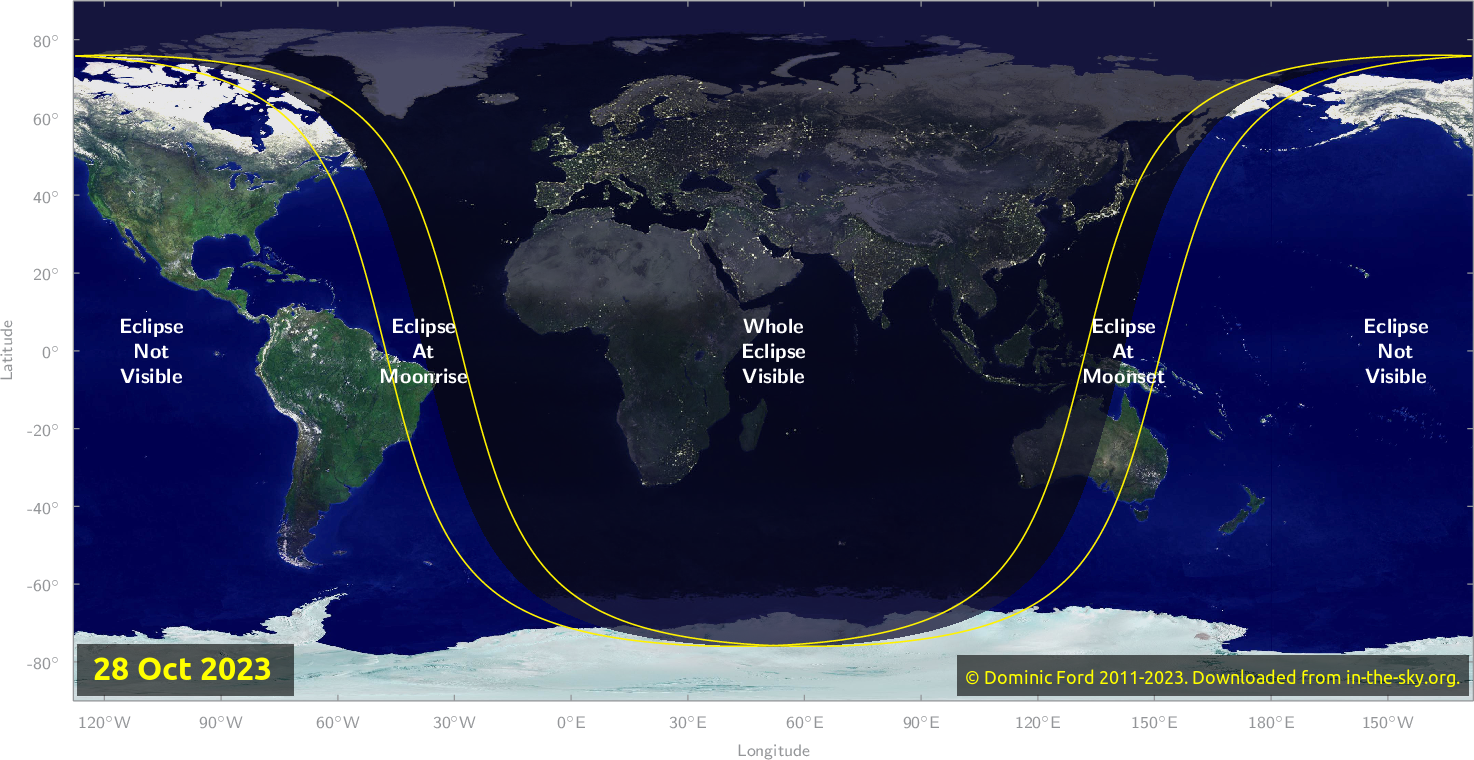Earth will experience 2 eclipses this month. Here's what you need to know
An annular solar eclipse and a partial lunar eclipse make October an exciting month for skywatchers.

Update for 3:45 p.m. ET: The annular solar eclipse of 2023 has completed its pass over the United States and moved into parts of Central America and South America. Read our wrap to see amazing photos and videos.
Both the sun and the moon will experience eclipses this month, although seeing them both in person could be tricky.
The Oct. 14 annular solar eclipse will be visible from eight states in the U.S. Southwest. This type of eclipse happens when the moon is slightly farther away from Earth than usual, making it appear too small to block out the entire sun and instead leave a thin "ring of fire" visible.
You can watch the annular solar eclipse online here on Space.com courtesy of NASA, beginning at 11:30 a.m. EDT (1630 GMT), and follow along with all the action on our annular eclipse live updates page.
Related: What time is the annular solar eclipse on Oct. 14?
More: Which U.S. states will October's 'ring of fire' solar eclipse be visible from?
For those outside the path of annularity, a partial solar eclipse will also be visible throughout the entire United States. See our guide on everything you need to know about North America's "ring of fire" eclipse for a full list of viewing times and locations, including maps.
And later in the month, on Oct. 28, a partial lunar eclipse will be visible from much of the Eastern Hemisphere, including Europe, Africa, Asia, Antarctica and Oceania. During the partial lunar eclipse, the moon will pass through Earth's shadow, making it appear less bright than usual. The partial lunar eclipse will begin at 3:36 p.m. EDT (1936 GMT) and end at 4:53 p.m. EDT (2053 GMT).
Get the Space.com Newsletter
Breaking space news, the latest updates on rocket launches, skywatching events and more!
Related: Lunar eclipses 2023: When, where & how to see them
Read more: Solar eclipses 2023: When is the next solar eclipse?
Annular solar eclipse on Oct. 14, 2023

If you're looking for safe optics to view solar eclipses, we recommend the Celestron EclipSmart 2x Power Viewers, which have 2x magnification or this travel-friendly solar telescope. You can also consult our guide to photographing the solar eclipse.
If you're in the path of the annular solar eclipse, be sure to check out our guides on the 10 best events across the U.S. to celebrate the Oct. 14 annular solar eclipse, seven places in the U.S. Southwest to see rare "edge effects" and 10 breathtaking locations to witness the "ring of fire" eclipse.
The next annular eclipse will take place on Oct. 2, 2024, when a ring of fire will be visible from the Pacific Ocean and parts of South America.
But eclipse watchers have another event to be excited about: A total solar eclipse on April 8, 2024, that is already being hailed as the "Great American Eclipse."
In fact, the "ring of fire" annular eclipse on Oct. 14 is being used as a "warm-up" by scientists who are preparing to conduct atmospheric and heliospheric research during the upcoming 2024 total eclipse.

Partial lunar eclipse on Oct. 28, 2023
The partial lunar eclipse on Oct. 28 is the second lunar eclipse of the year after a penumbral lunar eclipse on May 5. That eclipse saw the full Flower Moon pass through the outermost part of Earth's shadow, known as the penumbra.
To determine if you will be able to witness the Oct. 28 partial lunar eclipse for yourself, In-The-Sky.org has assembled a helpful map of locations that will be able to see the moon enter Earth's shadow.

If you want to see the partial lunar eclipse up close, check out our guides on the best telescopes and the best binoculars to help you get a great view of the moon.
And if you're looking to take awesome photos of the moon during this eclipse or any other time, check out our guide on how to photograph the moon as well as our best cameras for astrophotography and best lenses for astrophotography.
While lunar eclipses can be viewed with the unaided or unprotected eye, witnessing solar eclipses requires the right protection. To safely view the Oct. 14 annular solar eclipse or any other solar eclipse, you must use certified solar filters at all times. Even cameras, binoculars and telescopes will need these filters.
Our how to observe the sun safely guide tells you everything you need to know about safe solar observations.
Editor's note: If you get a picture of either one of these eclipses and want to share it with Space.com's readers, send your photo(s), comments, and your name and location to spacephotos@space.com.
Join our Space Forums to keep talking space on the latest missions, night sky and more! And if you have a news tip, correction or comment, let us know at: community@space.com.

Brett is curious about emerging aerospace technologies, alternative launch concepts, military space developments and uncrewed aircraft systems. Brett's work has appeared on Scientific American, The War Zone, Popular Science, the History Channel, Science Discovery and more. Brett has English degrees from Clemson University and the University of North Carolina at Charlotte. In his free time, Brett enjoys skywatching throughout the dark skies of the Appalachian mountains.









